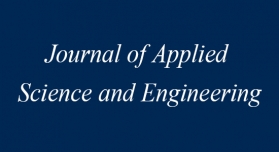REFERENCES
- [1] Harvey, W., On the Motion of the Heart and Blood in Animals, G. Bell and Sons (1889). doi: 10.9783/97808 12208627.1
- [2] Borelli, G. A., (1680) De Motu Animalium, Translated as on the Movement of Animals, (Translated by Maquet P.) Springer-Verlag, Berlin (1989).
- [3] Descartes, René., Discourse on Method, The Philosophical Works of Descartes, (Translated by ES Haldane & GRT Ross) Cambridge, 1911-12, pp. 192 (1830).
- [4] da Vinci, L., Codex “On the Flight of Birds” 1505, Leonardo Da Vinci: Turin: 17 (1505). (as Accessed on http://airandspace.si.edu/exhibitions/codex/codex. cfm#page-1)
- [5] Yan, J., Avadhanula, S. A., Birch, J., Dickinson, M. H., Sitti, M., Su, T. and Fearing, R. S., “Wing Transmission for a Micromechanical Flying Insect,” Journal of Micromechatronics, Vol. 1, No. 3, pp. 221237 (2001). doi: 10.1163/156856301760132123
- [6] Wood, R. J., “The First Takeoff of a Biologically Inspired At-Scale Robotic Insect,” Robotics, IEEE Transactions on, Vol. 24, No. 2, pp. 341347 (2008). doi: 10.1109/TRO.2008.916997
- [7] Collins, S., Ruina, A., Tedrake, R. and Wisse, M., “Efficient Bipedal Robots Based on Passive-Dynamic Walkers,” Science, Vol. 307, No. 5712, pp. 10821085 (2005). doi: 10.1126/science.1107799
- [8] Autumn, K., Sitti, M., Liang, Y. A., Peattie, A. M., Hansen, W. R., Sponberg, S., Kenny, T. W., Fearing, R. S., Israelachvili, J. N. and Full, R. J., “Evidence for van der Waals Adhesion in Gecko Setae,” Proceedings of the National Academy of Sciences, Vol. 99, No. 19, pp. 1225212256 (2002). doi: 10.1073/pnas.192252799
- [9] Geim, A. K., Dubonos, S. V., Grigorieva, I. V., Novoselov, K. S., Zhukov, A. A. and Shapoval, S. Y., “Microfabricated Adhesive Mimicking Gecko Foot-Hair,” Nature Materials, Vol. 2, No. 7, pp. 461463 (2003). doi: 10.1038/nmat917
- [10] Hawkes, E. W., Eason, E. V., Christensen, D. L. and Cutkosky, M. R., “Human Climbing with Efficiently Scaled Gecko-Inspired Dry Adhesives,” Journal of The Royal Society Interface, Vol. 12, No. 102, 20140675 (2015). doi: 10.1098/rsif.2014.0675
- [11] Kellar, A., Yiching, A., Liang, S., Hsieh, T., Zesch, W., Chan, W. P., Kenny, T. W., Fearing, R. and Full, R. J., “Adhesive Force of a Single Gecko Foot-Hair,” Nature, Vol. 405, No. 6787, pp. 681685 (2000).
- [12] Vogel, S. and Davis, K. K., Cats’Paws and Catapults: Mechanical Worlds of Nature and People, WW Norton & Company (2000).
- [13] Burrows, M. and Sutton, G., “Interacting Gears Synchronize Propulsive Leg Movements in a Jumping Insect,” Science, Vol. 341, No. 6151, pp. 12541256 (2013). doi: 10.1126/science.1240284
- [14] Nalbach, G., “The Gear Change Mechanism of the Blowfly (Calliphora Erythrocephala) in Tethered Flight,” Journal of Comparative Physiology A, Vol. 165, No. 3, pp. 321331 (1989). doi: 10.1007/BF00619351
- [15] Deora, T., Singh, A. K. and Sane, S. P., “Biomechanical Basis of Wing and Haltere Coordination in Flies,” Proceedings of the National Academy of Sciences, Vol. 112, No. 5, pp. 14811486 (2015). doi: 10.1073/pnas. 1412279112
- [16] Kundanati, L. and Gundiah, N., “Biomechanics of Substrate Boring by Fig Wasps,” The Journal of Experimental Biology, Vol. 217, No. 11, pp. 19461954 (2014). doi: 10.1242/jeb.098228
- [17] Porter, M. M., Adriaens, D., Hatton, R. L., Meyers, M. A. and McKittrick, J., “Why the Seahorse Tail is Square,” Science, Vol. 349, No. 6243, aaa6683 (2015). doi: 10.1126/science.aaa6683
- [18] Weis-Fogh, T., “Quick Estimates of Flight Fitness in Hovering Animals, Including Novel Mechanisms for Lift Production,” The Journal of Experimental Biology, Vol. 59, pp. 169230 (1973).
- [19] Lighthill, M., “On Weis-Fogh Mechanism of Lift Generation,” J. Fluid Mech., Vol. 60, pp. 117 (1973). doi: 10.1017/S0022112073000017
- [20] Sane, S. P., “Steady or Unsteady? Uncovering the Aerodynamic Mechanisms of Insect Flight,” The Journal of Experimental Biology, Vol. 214, No. 3, pp. 349351 (2011). doi: 10.1242/jeb.048330


![A page from Leonardo da Vinci’s Codex on the flight of birds, illustrating how his ornithopters were bird-inspired [4]. Bioinspiration and Biomimicry: What Can Engineers Learn from Biologists?](/images/article_images/19/19_1_01.jpg)













